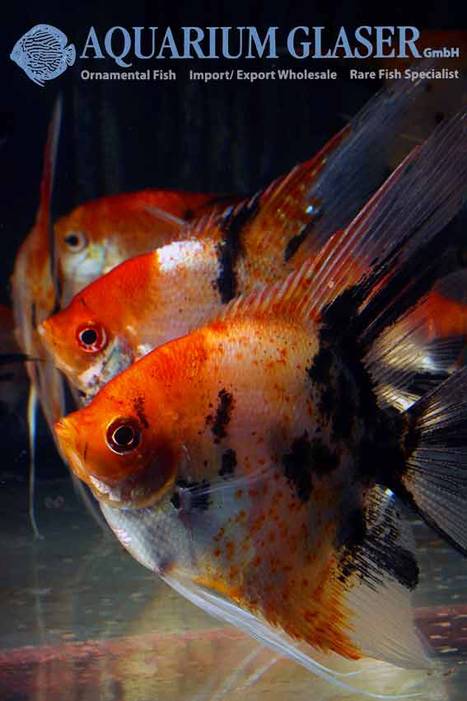
As each monthwe present thetop 5fishimportssponsored byAquarium Glaser!
Aquarium Glaser received 50 gorgeous, fully grown Red Devil Angels, in july. The fish are German bred ones. Our opinion is: more colour is impossible!

Last month, Aquarium Glaser obtained beautiful German bred specimens of this really nice killifish. A. gabunense is the perfect species for all aquarists who like the colorful killifish group but did so far not dare to keep them: A. gabunense is a really hardy fish and pretty easy to keep. The Gabon killi attains a maximum length of about 5 cm.
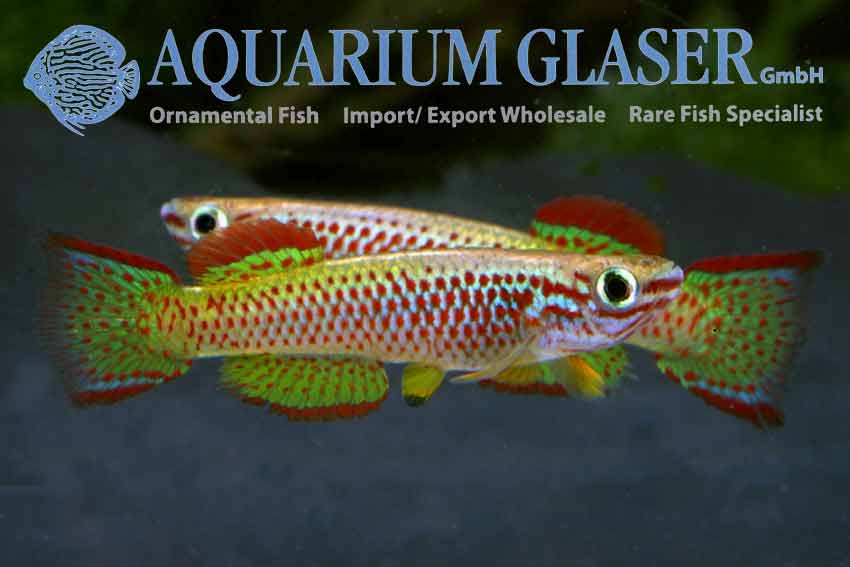
The colorful mouthbrooders from Lake Malawi – the so called mbuna – belong to the most popular aquarium fish over decades already. They are also called the “coralfish of freshwater”, for – like their salty relatives – they unite splendid colours and a rather quarrelsome temper. The latter is due to the very restricted food in the wild – both in the coral reef and in Lake Malawi. The sparse food is defended heavily, even when there is no need for this behaviour anymore in the aquarium. The wasp mouthbrooder (Pseudotropheus crabro) has found a very special resource of food. It lives in caves and cleans the large bagrid catfish from parasites. These bagrids are called Kampango all over the lake, the scientific name is Bagrus meridionalis. The large predators recognize the cleaner fish even in the darkness of the cave due to their contrasting yellow-black coloration. Dominant males of P. crabro become very dark, almost black. This says other males to stay away from him and gives a hearty welcome to all females. Lexicon: Pseudotropheus: means “false Tropheus”; Tropheus is another genus of cichlid. crabro: means “wasp”, according to the contrasting yellow-black coloration.
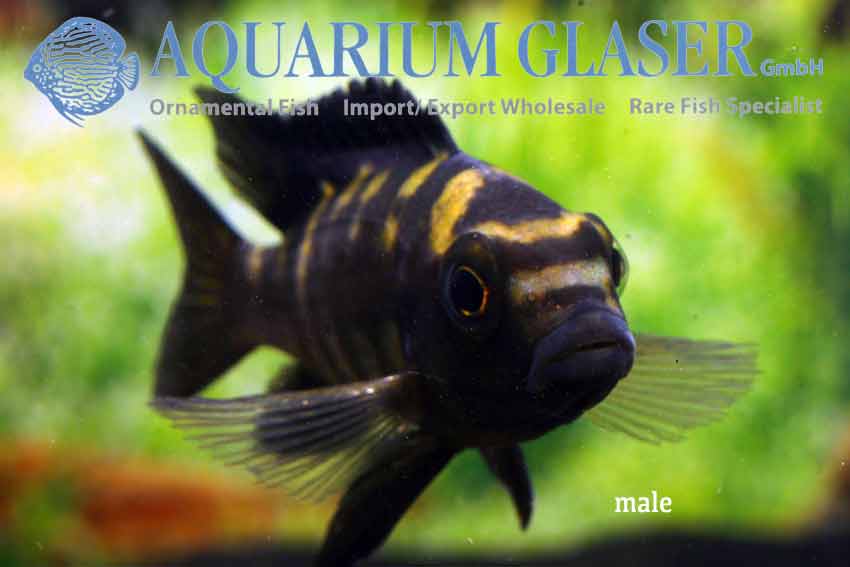
78 years ago a collector of ornamental fish – his name was C. Basil Jordan – discovered a blind species of tetra that lived in a cave in the state of San Louis Potosi in Mexico. Jordan was able to collect 100 specimens of the new fish and managed to bring them to the USA without losing even one specimen. His discovery was a sensation. The blind cave tetra was the first cave species belonging to the tetra family at all! The species was described in a new genus under the name of Anoptichthys jordani, which is translated “Jordan´s eyeless fish”. The species proofed to be very hardy and easy to breed. Today we know that the blind cave tetra can be crossed over generations with the “normal looking” tetra Astyanax fasciatus mexicanus that lives in aboveground waters all over Mexico. This fact was the reason why many scientists said that the blind cave tetra does not represent a species on its own. Nowadays things are looking different again. Most recent scientist accept species concepts rather under evolutionary aspects and so the blind cave tetra is most often named Astyanax jordani now. Interestingly the species never died out in aquaria since the first importation from 1936 and the ancestors of all specimens kept today are fish from the originally 100 wild collected ones. And the blind cave tetra is not a beauty! The fish we currently have in stock were bred in Singapore, but they also belong to the aquarium population established in 1936. Blind cave tetras can be kept along with any type of peaceful fish. Their blindness is no handicap at all. Most probably this is the reason why aquarists keep on breeding them: most fish enthusiasts want to study the unique adaptation of the blind cave tetra once in their lifetime.
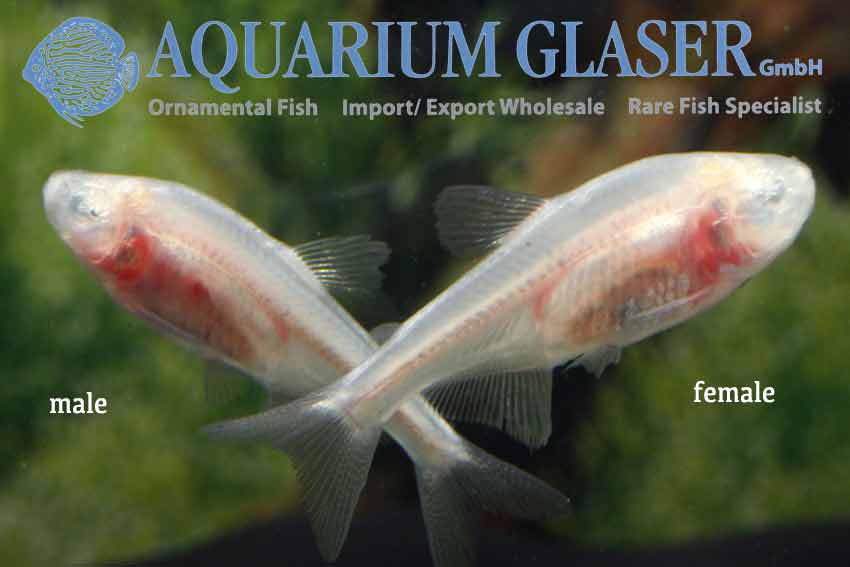
Aquarium Glaser was able to obtain this very rarely imported species of bottlenose catfish from Peru. A. marmoratus has a very wide distribution in Amazonia. The species is a predator that prefers to feed on live fish. The largest specimen known to science was about 20 cm long (Aquarium Glaser has some currently of 12-15 cm). It can be suspected that A. marmoratus is only the juvenile of another species of bottlenose catfish, namely A. inermis, because no one ever has found so far sexually active specimens of A. marmoratus. A. inermis becomes about 40-50 cm long. The males of all species of Ageneiosus develop very large dorsal spines during breeding season and a penis-like organ. During mating the males fixes the female with the dorsal spine. There is an internal fertilization. After the breeding season the dorsal spine becomes casted off, comparable to the antlers of a deer, and the penis-like organ becomes reduced so that males and females cannot be distinguished externally outside the breeding season.
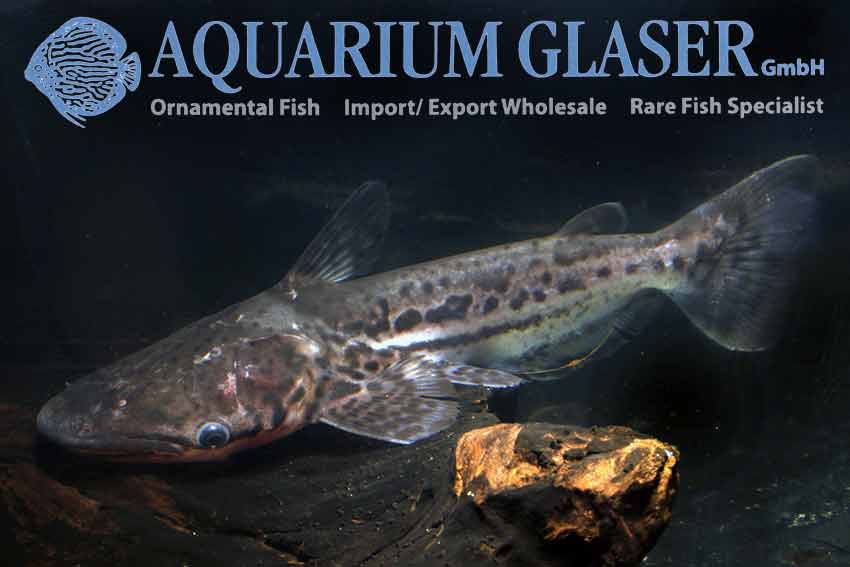
Aquarium Glaser was able to obtain this very rarely imported species of bottlenose catfish from Peru. A. marmoratus has a very wide distribution in Amazonia. The species is a predator that prefers to feed on live fish. The largest specimen known to science was about 20 cm long (Aquarium Glaser has some currently of 12-15 cm). It can be suspected that A. marmoratus is only the juvenile of another species of bottlenose catfish, namely A. inermis, because no one ever has found so far sexually active specimens of A. marmoratus. A. inermis becomes about 40-50 cm long. The males of all species of Ageneiosus develop very large dorsal spines during breeding season and a penis-like organ. During mating the males fixes the female with the dorsal spine. There is an internal fertilization. After the breeding season the dorsal spine becomes casted off, comparable to the antlers of a deer, and the penis-like organ becomes reduced so that males and females cannot be distinguished externally outside the breeding season.
Anzeige






